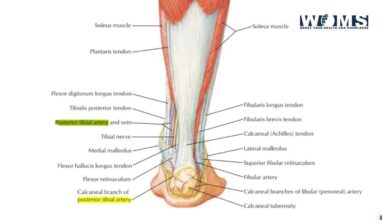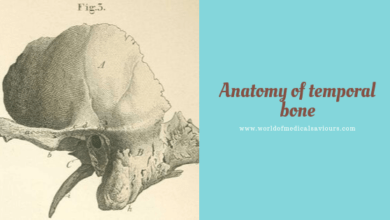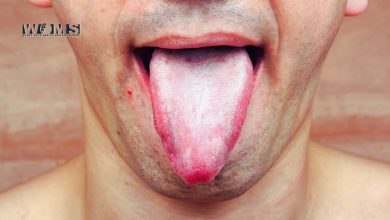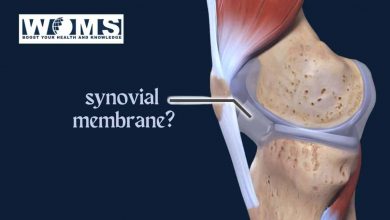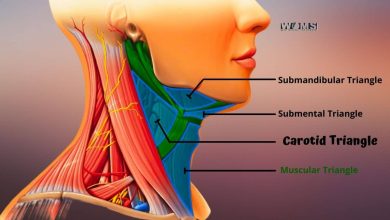The ultimate guide to Rabbit Skull: Images and Anatomy

A rabbit skull is a combination of a variety of bones to maintain the proper size and shape of the rabbits. This article will explain multiple unique features of the rabbit skull associated with their bony contents. In addition, it will also help you to understand all the fundamental anatomical details related to the rabbit skull. Let us take a deep dive into the anatomical features of the rabbit skull.
Rabbits or bunnies are small mammals that belong to the Leporidae family. In addition, rabbits belong to the vertebrate family. Just like other vertebrates, the skeletal system of rabbits is divided into two parts.
- Axial skeleton
- Appendicular skeleton
The axial skeleton maintains the structural integrity of the rabbits along the longitudinal axis of the body. It consists of a variety of bones in the skull, vertebral column, ribs, and sternum. Whereas, the appendicular skeleton is present at the right angle to the longitudinal axis of the body. In addition, the appendicular skeleton includes the forelimb and hindlimb including girdles.
What are the important characteristic features of the rabbit skull?
The rabbit skull, as a part of the axial skeleton, possesses some specific anatomical features. Similar to one of the last articles where we discussed about the features of Tiger skull anatomy, let’s have a detailed look at these features to understand the anatomical details concerning the rabbit skull.
- As rabbits grow, there is a tendency related to an increase in the size of the brain. To adjust the brain, the rabbit skull possesses a short posterior cranial portion and a long anterior facial portion consisting of jaws. In contrast, the higher mammals contain facial parts quite below the cranial part.
- When the skull grows, the number of bones in the rabbit skull is reduced. It happens due to the fusion of multiple bones. These fused bones are only differentiated with the help of sutures.
- The rabbit skull is dicondylic containing two occipital condyles. Every exoccipital consist of an occipital condyle
- The rabbit skull is tropibasic. It means that a vertical interorbital septum lies between the two orbits. The cranium does not exceed the orbital region.
- The respiratory tract of the rabbit is properly separated from the digestive tract due to the presence of the palate. The palate is formed by the premaxillae, maxillae, and palatines.
- There is a zygomatic arch on both sides of the skull to indicate cheek prominence. The zygomatic arch is made up of squamosal, jugal, and maxillary bones.
- There are also auditory capsules present in the rabbit skull. These are formed by the combination of tympanic and periotic bones in the form of a swollen tympanic bulla.
- The articular and quadrate of the jaws are separate and free to move. They usually form the malleus and incus, ear ossicles. Moreover, the third ear ossicle, stapes, is formed by the columella.
- There are different bones that fuse to form a single periotic. These bones are otic, prootic, epiotic, and opisthotic.
- Turbinal bones are usually folded to enhance the olfactory surface area of the nasal chambers.
- There is a single dentary bone to form almost one-half of the lower jaw.
- Jaws suspensorium is craniostylic which means the dentary bone is articulated with the cranium through squamosal.
- There are premaxillae, maxilla, and dentaries that contain the thecodont teeth of the rabbit skull. Rabbit contains diphyodont teeth which are a mixture of primary and permanent teeth. These are usually heterodont. Moreover, rabbits do not have canines. This space is referred to as diastema.
What are the different parts of the rabbit skull?
The rabbit skull is divided into three main parts. These are as follows:
- Cranium that covers the brain
- Sensory organs including olfactory, auditory, and orbital structures that are closely connected to the cranium
- The visceral skeleton consists of the upper and lower jaws and also the hyoid apparatus
We will discuss all these divisions in detail to know about every anatomical aspect of the rabbit skull.
Cranium
The cranium is the outer bony covering of the skull to protect the brain and its sensory structure. It is further divided into three main segments. These are as follows:
- Anterior frontal segment
- Middle temporoparietal segment
- Posterior occipital segment
Let us have a detailed look at these different segments of the cranium.
Posterior occipital segment
It forms the posterior aspect of the skull. In addition, it also covers the caudal portion of the base of the cranium. There are four major bones that merge together to form a larger opening known as the foramen magnum. From this, the spinal cord passes out. The supraoccipital segment marks the boundary of the foramen magnum. Whereas, the basioccipital represents the ventral boundary of the foramen magnum. The lateral boundaries are appreciated by the pair of exoccipitals.
Supraoccipital segment
It is a flat shield with a pitted surface to represent the squamous part of the occipital bone. The central part is quadrilateral and covered by nuchal crests laterally and caudally. In the rostral direction, it is separated from the parietal bone through the miniature interparietal bone.
Basioccipital segment
As the name indicates, it represents the basal part of the occipital bone. It is wide and short. In addition, its thickness increases rostrally where it articulates with the basisphenoid bone. This segment is represented by the median longitudinal ridge with two lateral muscular tubercles.
Exoccipital segment
This segment covers the occipital bone laterally. Dorsally, it has a deep depression to appreciate and an occipital condyle in the ventral direction. Rabbit skull is dicondylic because of two occipital condyles. These condyles extend on both sides 9f the foramen magnum to articulate with the atlas. The lateral segments of the occipital lie ventrally into the prominent jugular processes. This segment also contains condyloid fossa that is quite deep and present between the occipital condyle and jugular process. It marks a double hypoglossal canal.
The middle temporoparietal segment
This segment consists of a combination of seven bones that are as follows:
- Triangular basisphenoid present on the mid-ventral side
- Pair of alisphenoid
- Two temporal bones on each side
- Two parietal bones are present on the dorsal aspect
Basisphenoid bone
It possesses a wide posterior end and is attached to the basioccipital through a thin layer of cartilage. It also contains a median longitudinal ridge that terminates at the middle of the bone at the level of the craniopharyngeal canal. The craniopharyngeal canal opens into the cranial cavity near the hypophyseal fossa.
Alisphenoids
This bone forms the wings of the basisphenoid bone. It is in the shape of a pitted plate which is firmly combined with the basisphenoid in the ventral direction. Whereas, the temporal bone lies laterally to the alisphenoid bone. The alisphenoid bones extend caudally towards the orbital wall. From this, it continues to the caudal aspects of the palatine bone. At this point, it forms the pterygoid process.
Temporal bone
The temporal bone forms the largest area of the lateral segment of the cranium. It is sandwiched between the parietal and alisphenoid bones. It offers prominent zygomatic processes to articulate with the zygomatic bone in the ventral direction. The temporal bone leaves the auditory capsules, appearing as a porous and light mastoid part and prominent tympanic bulla. In addition, there is a styloid process near the ventral aspect of the external acoustic meatus. There is also a stylomastoid foramen between the styloid and mastoid foramen.
Parietal bone
The parietal bones are in thin paired form to protect the brain from the dorsal direction. These bones are connected together through a suture present along the mid-dorsal line. There is a small interparietal bone that separates the parietal from the supraoccipital.
Frontal segment
There are five specific bones in this region. These are as follows:
- Body of presphenoid
- Lateral wings
- Two frontal bones
Presphenoid bone
The presphenoid bone is a thin and smaller bone present on the ventral surfaces of the cranium. It is connected to the basisphenoid with the help of cartilage. In addition, it forms the anterior and ventral boundary of the optic foramen.
Orbitosphenoid bone
This bone forms the lateral wings of the presphenoid bone. They are in wing forms that are slightly bulged outward and connected with the presphenoid bone ventrally. In addition, the temporal bone is present caudally and the frontal bone is in the dorsal direction. Moreover, it forms the medial wall of the orbit.
Frontal bone
The frontal bone is a large and strong bone that protects the brain from the dorsal view. The frontal bones are united with each other through an interfrontal suture. These frontal bones extend on both sides and meet with each other in an inverted V-shape between the nasal bones. In a dorsal direction, the lateral segments of the frontal bone join to form the supraorbital process. It forms a prominent ridge over the orbit.
Orbit
Orbits are present on both sides of the frontal region in the cranial region. There is a median inter-orbital septum that differentiates both of the orbits. Orbits are formed by frontal, orbitosphenoid, alisphenoid, and ethmoid bones. In addition, the optic axis forms a right angle to the median plane. This angulation permits a greater range of vision. The lateral walls of the orbit are covered by a zygomatic arch.
Lacrimal bone
The lacrimal bones are smaller bones present near the rostral aspect of the orbit. It contains a nasolacrimal canal to provide a way to the lacrimal duct.
Ethmoid bone
The ethmoid bone is present in front of the cranial cavity and separates the nasal cavity. It is in a cribriform-like plate with a sieve-like bone to pass through olfactory nerve fibers. There is a small perpendicular plate to form the caudodorsal portion of the osseous nasal septum.
2. Sensory organs
There are three basic senses that are associated with the cranium directly or I directly. These senses are associated with different organs of the cranium. These are as follows:
- Olfactory organ to sense smell
- Auditory organs for hearting
- Orbits for the vision
These structures are closely associated with the cranium.
Olfactory organs
There are three olfactory organs to differentiate the stimulus of smell. Let us discuss these olfactory capsules to understand their anatomy.
Nasal
There is a roof of an olfactory chamber that is made up of two flat nasal bones connected with a mid-dorsal line. Every nasal possesses an inner thin and hollow process of nasoturbinal. The anterior aspect forms the upper region of the external nostril. Each nasal is connected to the premaxilla laterally.
Vomer
There are two bones that are long and slender in shape to form the floor of the olfactory capsule. These are dorsally articulated with the inferior margin of the nasal septum. In addition, it also possesses lateral wings.
Tribunals
Every olfactory chamber is separated by the median septum. It is a combination of bone and cartilage, containing turbinate bones on each side. These turbinate bones are ethmoturbinals, maxilloturbinal, and nasoturbinal.
Auditory organs
The auditory organs are found near the posterolateral part of the cranial region of the skull. Every organ is made up of two bones (periotic and tympanic) and is covered by the internal ear.
Periotic bone
Periotic bone is a cartilaginous type of bone, formed by prootic, epiotic, and opisthotic bones. It is present between the occipital and squamosal regions in a bulge form. It consists of two main parts.
- An internal bony and hard petrous part
- An outer posterior mastoid part
Tympanic bone
It is a membranous bone present on the outer surface of the periotic. Its lower part is known as tympanic bulla which is flask-shaped. It covers the tympanic cavity surrounding the ear ossicles. It also contains stylomastoid foramen at the posterior aspect to pass facial nerves.
Orbits
The orbits are present in the frontal part of the cranial region. It holds the sensation for the vision.
Visceral skeleton
The visceral skeleton contains the upper and lower jaw and hyoid bone.
Upper jaw
The upper jaw consists of the premaxilla, maxilla, jugals, palatines, and pterygoids. These bones are connected to the cranium and olfactory capsules.
Premaxillae
These are larger bones to form the anterior part of the upper jaw. They unite in the median line. Every premaxilla holds two sockets for incisors. In addition, it holds two processes (nasal and palatine processes) to meet the counterpart of the other side. These processes extend up to the palatine process of the maxilla.
Maxilla
The maxilla is an irregular large bone to form the major portion of the upper jaw and sides of the face. The central region holds six sockets for the cheek teeth.
Palatine
The palatines are thin and vertically situated bones in the mid-ventral region. These palatine processes fuse to form a hard palate.
Pterygoid
The pterygoids are small and irregular bint plates behind the palatines. It is also associated with the pterygoid process of alisphenoids.
Jugal
Molar or jugal is a compressed bone present in the lateral direction. It forms the major part of the zygomatic arch.
Lower jaw
The lower jaw consists of two halves that connect to form mandibular symphysis. Every ramus is made of a single bone known as a mandible. It contains horizontal parts that consist of sockets.
Hyoid
The hyoid is a small thick body that is placed between the halves of the mandible in a transverse direction.
What are the important foramina and their associated with passing through them?
There are several foramina in the cranium connecting the inner side of the cranium to the outside. Let us have a look at the foramina and its associated structures.
- Optic foramen – both optic nerves
- Sphenoidal fissure / superior orbital fissure – cranial nerve III, IV, maxillary and ophthalmic branches of V, and VI nerves
- Foramen lacerum – mandibular branch of cranial nerve V and internal carotid artery
- Stylomastoid foramen – cranial nerve VII
- External auditory meatus
- Jugular foramen – cranial nerves IX, X, and XI and internal jugular vein
- Condylar foramen – cranial nerve XII
- Infraorbital foramen – mandibular branch of cranial nerve V
- Lachrymal foramen – lachrymal duct
- Pituitary foramen – pituitary body
- Foramen Magnum – spinal cord
- External carotid foramen – external carotid artery
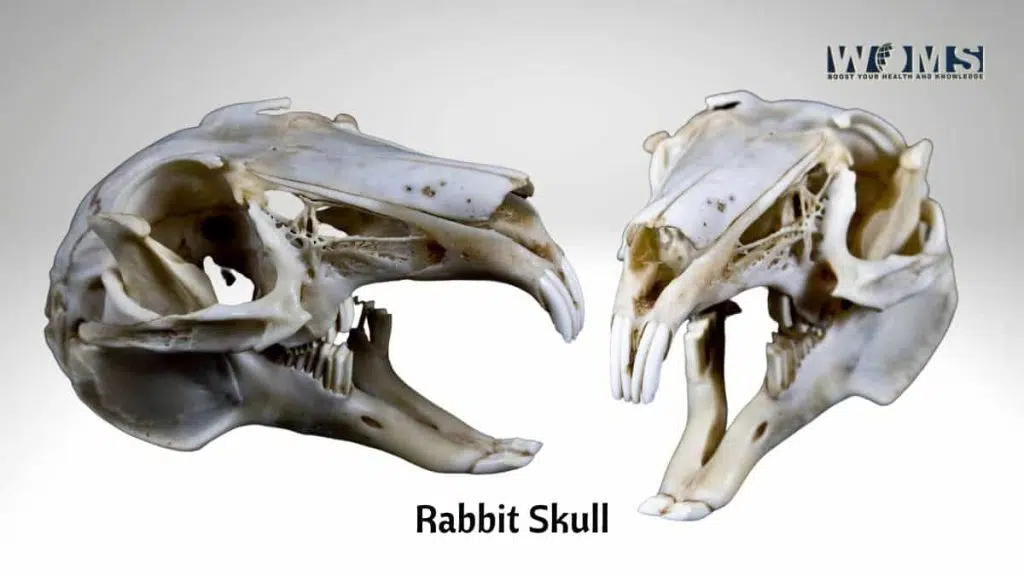
Conclusion
The rabbit skull is a combination of multiple bones arranged in different segments. This article will help you to understand all the important anatomical details of the rabbit skull. Take an in-depth review of this article to understand the concepts of rabbit skull anatomy.
Frequently asked questions (FAQs)
How many bones does a rabbit possess?
There are almost 210 bones in the rabbit’s body. The axial skeleton maintains structural integrity. Whereas, the appendicular skeleton contains the girdles.
Why do rabbit skulls possess holes?
The rabbit skull contains multiple holes to reduce the overall weight of the skull and stabilize the skeleton.
